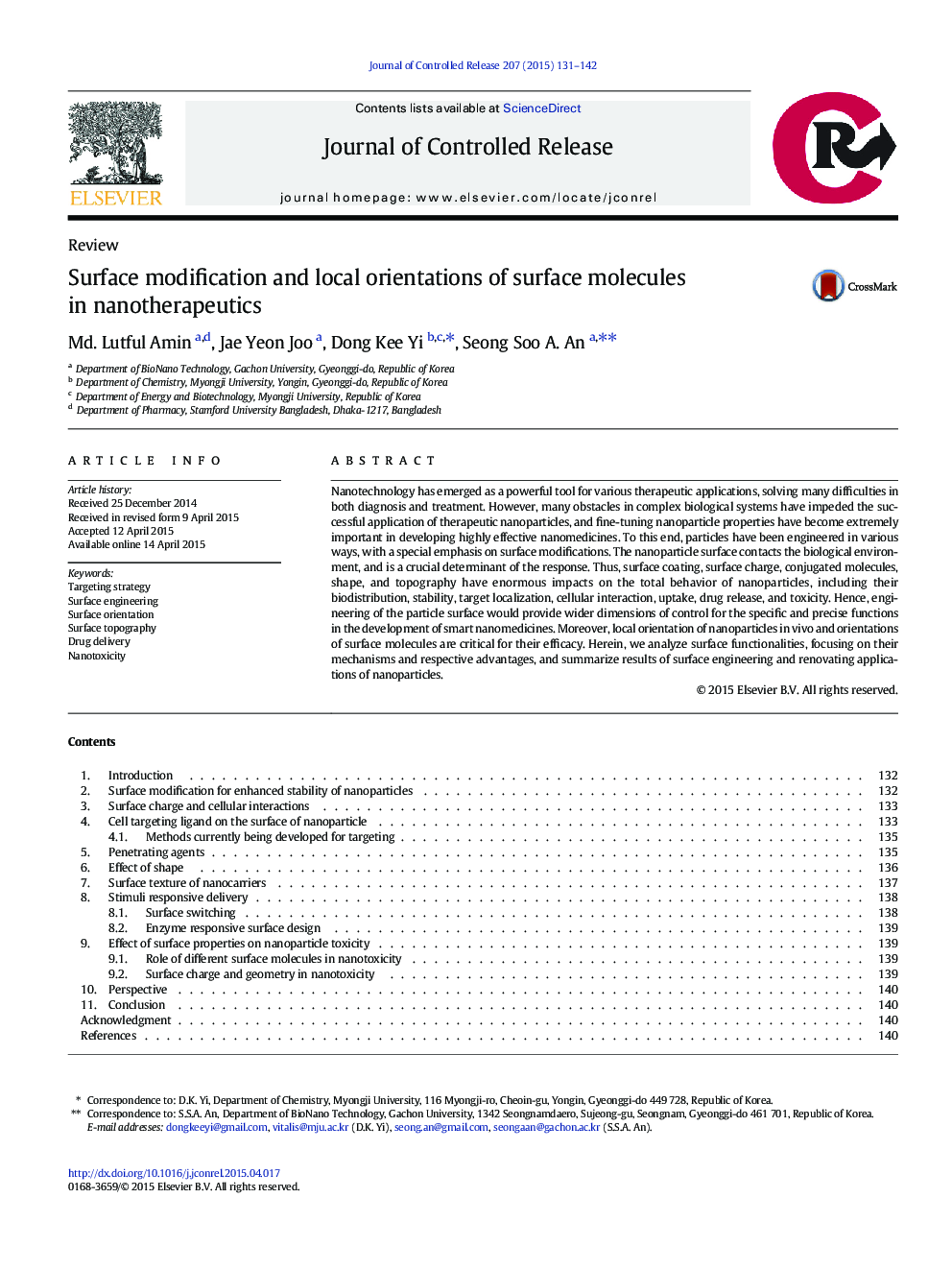| Article ID | Journal | Published Year | Pages | File Type |
|---|---|---|---|---|
| 1423712 | Journal of Controlled Release | 2015 | 12 Pages |
Nanotechnology has emerged as a powerful tool for various therapeutic applications, solving many difficulties in both diagnosis and treatment. However, many obstacles in complex biological systems have impeded the successful application of therapeutic nanoparticles, and fine-tuning nanoparticle properties have become extremely important in developing highly effective nanomedicines. To this end, particles have been engineered in various ways, with a special emphasis on surface modifications. The nanoparticle surface contacts the biological environment, and is a crucial determinant of the response. Thus, surface coating, surface charge, conjugated molecules, shape, and topography have enormous impacts on the total behavior of nanoparticles, including their biodistribution, stability, target localization, cellular interaction, uptake, drug release, and toxicity. Hence, engineering of the particle surface would provide wider dimensions of control for the specific and precise functions in the development of smart nanomedicines. Moreover, local orientation of nanoparticles in vivo and orientations of surface molecules are critical for their efficacy. Herein, we analyze surface functionalities, focusing on their mechanisms and respective advantages, and summarize results of surface engineering and renovating applications of nanoparticles.
Graphical abstractFigure optionsDownload full-size imageDownload high-quality image (162 K)Download as PowerPoint slide
